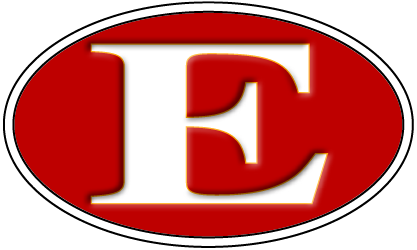After moving nearly a million tons of soil and sediment on land and water for more than 18 months – and spending in excess of $68 million in private funds – Encore Boston Harbor announced that it has completed final remediation and cleanup work on the 33-acre site.
The final cost is $38 million more than the $30 million amount previously estimated for site cleanup. An additional $14 million will be spent on landscaping and beautifying the six-acre Encore Harborwalk Park in front of the resort.
The increased price tag for land cleanup has increased the overall cost of Encore Boston Harbor to $2.5 billion, up from $2.4 billion. The higher site cleanup cost is primarily attributed to increased quality measures that were undertaken once work started. The addition of restaurants and change in ballroom size, both previously announced, also contributed to the cost increase.
“You can’t put a price tag on turning back the clock and unlocking a spectacular waterfront park that will bring beauty and enjoyment for generations to come,” said Robert DeSalvio, president of Encore Boston Harbor. “At every point of our constantly evolving cleanup process, when a decision needed to be made, we went with the option that delivered the best quality and most beautiful outcome.”
The Encore Boston Harbor resort sits on the Mystic River in Everett, overlooking the downtown Boston skyline. Several chemical companies were housed on the land from 1868 to 1983, rendering the urban Mystic River waterfront in Everett inaccessible to the public for more than 100 years.
“This is a great day for the Mystic River and those who call it home,” said Elizabeth Turnbull Henry, president of the Environmental League of Massachusetts. “For decades, this river and sediment have been toxic and unwelcoming to people and nature. With the cleanup complete, we expect to see local communities, plants and wildlife flourish again.”
The Mystic River Watershed Association (MyRWA) also celebrated the site cleanup.
“When Wynn Resorts arrived on the Mystic, our organization challenged the company to clean up the site and install a living shoreline,” said Patrick Herron, executive director of MyRWA. “We want to be first to congratulate them and celebrate the success of this environmental cleanup. This environmental project is a win-win-win for economic development, urban parks and the environmental quality of the Mystic River. We’re excited to keep going in our shared efforts to improve the Mystic River environment.”
The remediation work completed by Encore Boston Harbor included the successful removal of 840,000 tons of contaminated soil from the land using 11,900 truckloads and 4,700 rail cars—enough dirt to fill Fenway Park. Another 41,000 tons of sediment was dredged from the inlet outside of Encore Boston Harbor using barges. The river bed was capped with 30,000 tons of clean sand and a 24,000 square-foot living shoreline was planted to bring the site to its original condition, facilitate the natural cleanup of the Mystic River and support the return of native fish and wildlife to the area. No public or taxpayer funds were used for the cleanup.
The Encore Boston Harbor site has a historic past that predates the housing of chemical plants in the 1800s:
- More than 500 great clipper ships that sailed the world were built along the Mystic River from the 1600s through the 1800s.
- The first ship built by Europeans in Massachusetts, the Blessing of the Bay, was launched from the river’s shores in 1631. Ships primarily transported timber and molasses to rum distilleries located between here and the West Indies.
- In 1774, more than 250 British troops rowed past this point to capture a nearby powder house where gunpowder was kept. This sparked a popular uprising known as the Powder Alarm.
- Less than one year later, the British traveled past the site on boats and landed a mile away in Charlestown to launch the famous Battle of Bunker Hill.
- Local writer Lydia Maria Child wrote about the Mystic River in her famous 1844 poem, “Over the River and Through the Woods.” The house that is referred to in the poem still stands upstream on the river, in the City of Medford.
- In the 1861 poem “Paul Revere’s Ride” by Henry Wadsworth Longfellow, Paul Revere rides along the banks of the Mystic River.
- The Atwood family, original owners of what would become Boston’s famed Union Oyster House, used this shoreline to harvest oysters that were sold at their restaurant in the early 1800s to regulars such as American statesman Daniel Webster.
With the site remediation work complete, efforts to finalize the Encore Harborwalk are underway. The Harborwalk will sit on a six-acre park surrounding the resort and feature pedestrian and bicycle paths that link with the regional waterfront trail network, an events lawn, picnic and public viewing areas, ornate floral displays and retail and dining experiences that overlook the Mystic River.
The Harborwalk will also connect guests and employees to points across Boston Harbor via a robust water transportation system that the resort is introducing. Low-profile European-style boats will be used by Encore Boston Harbor to transport guests year- round without the need to raise area drawbridges.
